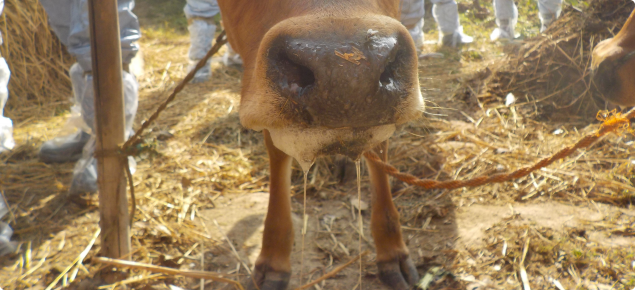The outbreak of Foot and Mouth Disease(FMD) in Namibia has severely hit farmers and informal beef traders in the northern part of Namibia.
So far, cases of FMD were reported in the Kavango East, Kavango West, Ohangwena, Oshikoto and Oshana regions, also declared as disease management areas by the Ministry of Agriculture, Water and Land Reform.
August Mbadhi, an informal trader who sells beef to locals, said that the disease outbreak has negatively affected her business.
Although the direct slaughter of animals within the affected regions is permitted as per prescribed regulations, limited stock and restrictions have escalated prices for available beef and other meat products due to the high demand, which is thwarting the farmers.
“Let me put it this way. The cost of beef sold by farmers able to slaughter is very high. Thus, I also have to increase the prices of what I re-sell and cook. As a result, these discourage our clients who were drawn to our stalls by lower prices,” she said on Friday.
According to the trader, over the last months, her proceeds declined drastically, affecting the sustainability of her business and livelihood.
She is not the only one. David Shikongo, a farmer in the far-lung village in the Oshikoto region in the northern part of Namibia, said that the disease had disrupted his supply value chain.
“In the past, I would sell my cattle to suppliers who would then slaughter and sell to informal traders and other farmers. But the outbreak disrupted our operations. Although the movement of animals is now allowed under conditions of inspection by officials, things are hard,” Shikongo said.
Meanwhile, farmers are also battling anxiety, sparked by the fear of their animals succumbing to the disease.
“It is such an emotionally draining period. Nobody wants to risk their animals’ health by selling or buying. This means that no income is generated from farming efforts, which is our sole source of income. Furthermore, one does not know what to expect. We live on hope for now,” said Mike Mateus, a farmer in the Ohangwena region.
Jason Emvula, President of the Namibia National Farmers’ Union, said that the outbreak of FMD has gravely hit communal farmers’ trade and efforts to sell their livestock.
“The communal farmers are the ones severely affected. We call on the robust engagement by all stakeholders in the management and control of FMD to find a lasting solution,” Emvula said.
In the interim, to manage the disease’s spread, the ministry has instituted animal movement control and started surveillance and vaccination of the animals in the affected regions.
Albertina Shilongo, a chief veterinary officer in the Ministry of Agriculture, Water and Land Reform, said that the government has embarked on vaccination of cattle in all affected areas.
“Vaccination is one of the most effective methods for controlling this disease, and farmers are strongly encouraged to present all their cattle for vaccination,” Shilongo said.
Thus far, the ministry has vaccinated over 90,000 cattle between January and February this year.


